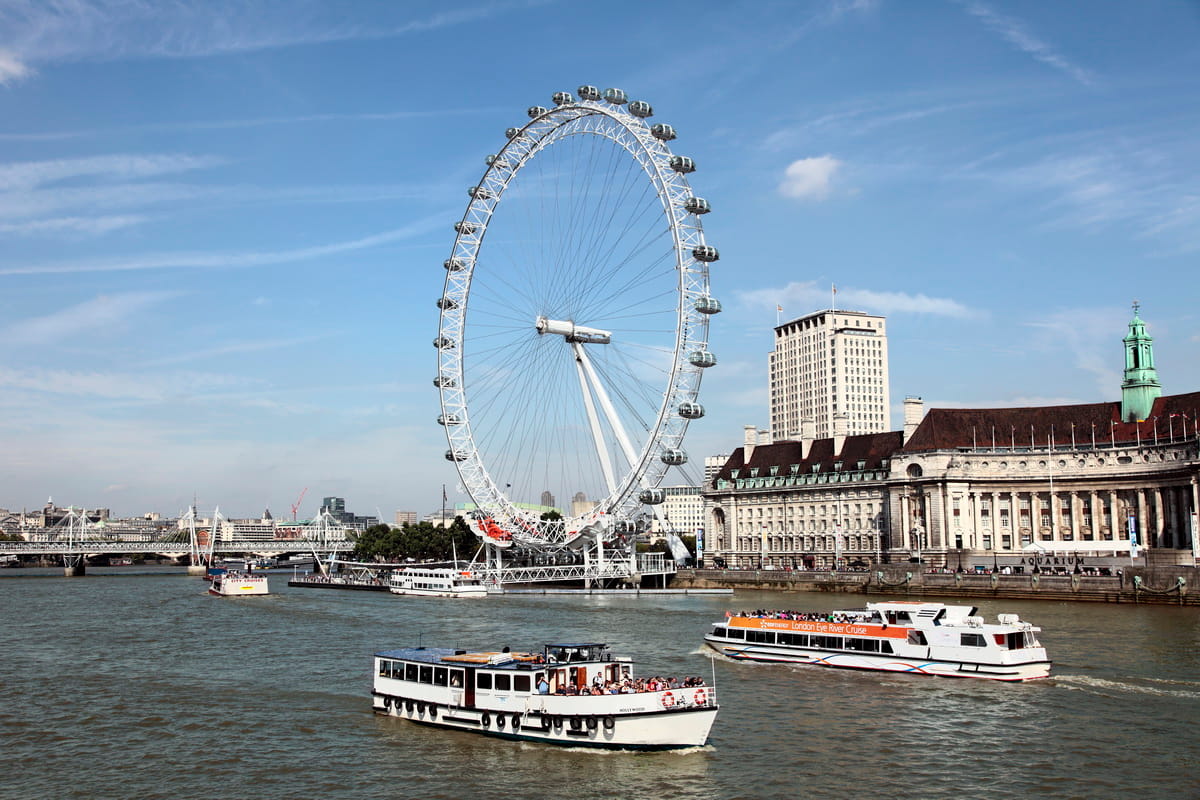Spanning 215 miles, the River Thames is the longest river entirely in England and the second-longest in the United Kingdom. Its history is as deep as its waters, with human activity traced back to the Iron Age. The Thames has witnessed Viking invasions, the signing of the Magna Carta in 1215, and the Industrial Revolution. It’s been a lifeline for trade, a canvas for artists, and a source of inspiration for writers.
Let’s embark on a journey through 21 fun facts about the River Thames, where each fact is a glimpse into the river’s storied past.
1. Origin of the Name ‘Thames’
The Thames owes its name to the Romans, who named it ‘Tamesis’, a word rooted in the ancient Celtic language, meaning ‘dark’. It’s a reflection of the river’s murky waters. The river’s name evolved over centuries, with the Anglo-Saxons referring to it as ‘Temese’, and finally settling into its current form, ‘Thames’, around the 16th century.
This linguistic evolution mirrors the cultural and historical changes of the regions it flows through.
2. The Thames’ Role in World War II
The River Thames was a strategic asset in World War II. It served as a major transport route for troops and supplies, and its banks housed important industries contributing to the war effort. The river also played a defensive role, with barrage balloons floating above to deter German bombers.
In 1940, the river was a first-line defense during the Dunkirk evacuation, with many small boats traversing its waters to rescue soldiers. This period underscored the Thames’ strategic importance in British wartime history.

Image: thames250exhibition.com
3. The Great Stink of 1858
In the hot summer of 1858, the Thames turned into a stinking cesspool, giving rise to the ‘Great Stink’. London’s sewage, dumped untreated into the Thames, fermented under the heat, creating unbearable odors. This crisis led to a major overhaul of the city’s sewage system under engineer Joseph Bazalgette. His designs, completed in the 1860s, are still the basis of London’s sewage network today.
The Great Stink was a turning point in urban sanitation, highlighting the Thames’ impact on public health and city planning.
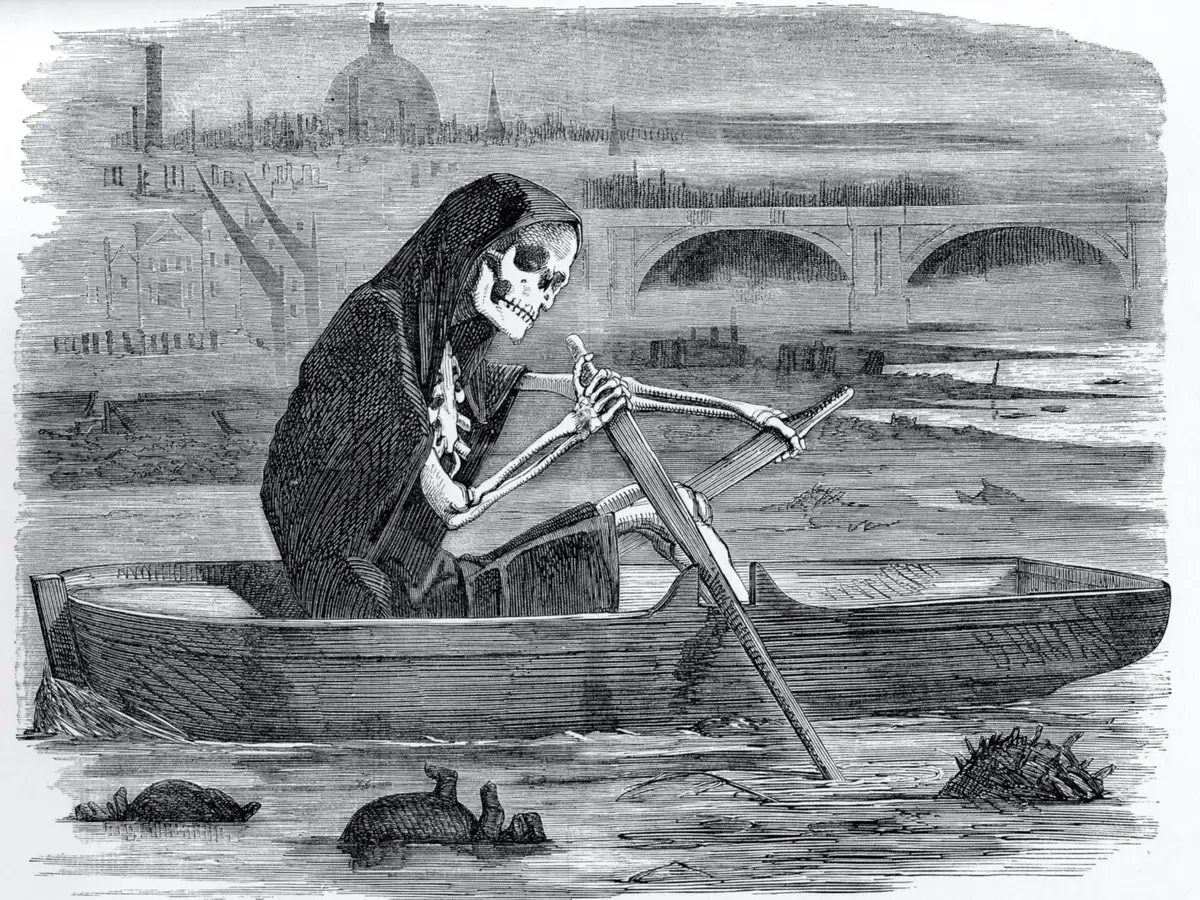
Image: halfarsedhistory.net
4. The Thames Barrier: Protecting London
Constructed between 1974 and 1984, the Thames Barrier is London’s primary defense against flooding. It was a response to the 1953 North Sea flood that claimed over 300 lives in the UK.
The barrier spans 520 meters across the Thames at Woolwich and consists of 10 steel gates that can be raised in just 30 minutes. It’s been pivotal in protecting London from high tides and storm surges, symbolizing the blend of engineering prowess and environmental foresight.
The Barrier showcases the continuing efforts to safeguard London against the river’s might.

Image: 21stcenturychallenges.org
5. The River’s Length and Journey
The River Thames stretches over 215 miles, originating in a Gloucestershire meadow and flowing through Oxford, Reading, Henley-on-Thames, and Windsor before reaching London and eventually the North Sea. Its journey reflects a cross-section of English landscapes and history.
The Thames passes through varied terrains, including rural meadows, historic towns, and the bustling heart of London, serving as a geographical timeline of England’s cultural and natural heritage.

Image: pinimg.com
6. Historical Significance of the Thames Frost Fairs
The Thames Frost Fairs, held during the Little Ice Age between the 17th and early 19th centuries, were a unique phenomenon. When the Thames froze, Londoners set up markets, sports, and festivities on the ice.
The most famous fair in 1814 featured an elephant walking across the river near Blackfriars Bridge. These fairs, particularly in the harsh winters of 1683-84 and 1814, serve as historical bookmarks, showcasing the climate patterns and social life of the era.
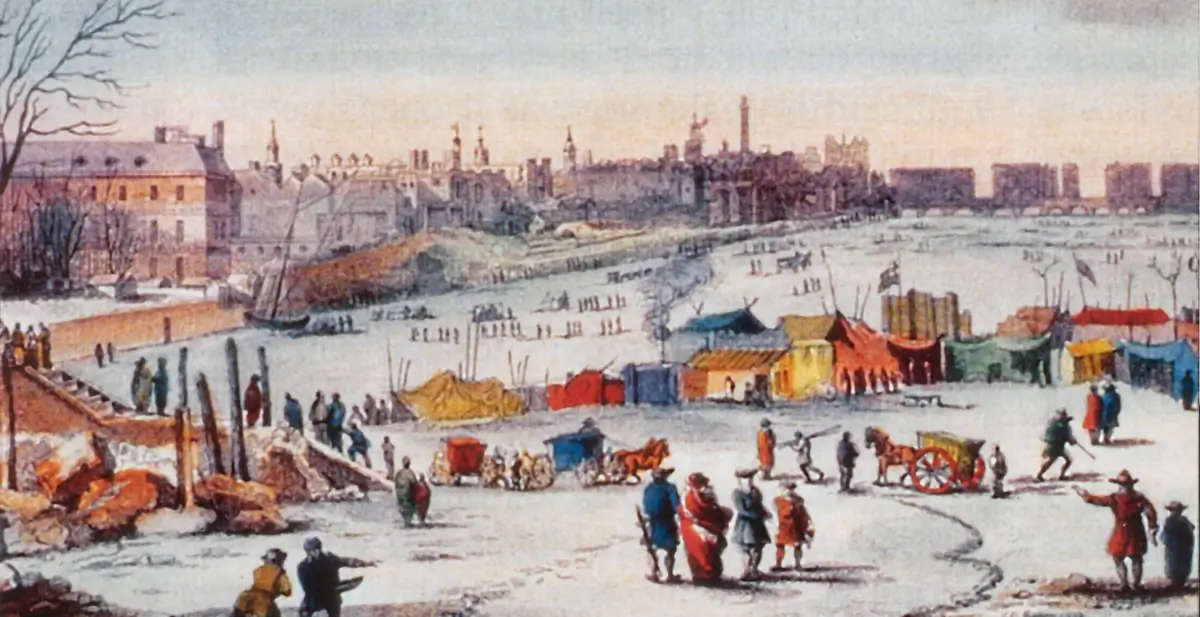
Image: historic-uk.com
7. The Thames’ Biodiversity and Ecosystem
The River Thames is a biodiversity hotspot, home to over 125 species of fish and countless bird species. Once biologically dead in the 1950s due to pollution, the river has seen a remarkable recovery, now supporting seals, dolphins, and even the occasional whale.
Efforts by environmental groups have played a crucial role in this revival, turning the Thames into a thriving ecosystem and an excellent example of successful river restoration.

Image: washingtonpost.com
8. Boat Races and Sporting Events on the Thames
The Thames is synonymous with iconic sporting events, most notably the annual Oxford-Cambridge Boat Race. First held in 1829, this 4.2-mile race between Putney and Mortlake has become a celebrated British tradition.
The river also hosts the Henley Royal Regatta, an international rowing event since 1839. These events underscore the Thames’ role in British sporting culture, bringing together athletes and spectators from around the world.

Image: ox.ac.uk
9. Famous Bridges Over the Thames
The Thames boasts some of the world’s most iconic bridges, each with its own history and architectural merit. London Bridge, the oldest, has existed in various forms since Roman times. Tower Bridge, a symbol of London, completed in 1894, is famous for its Victorian Gothic style and unique bascule and suspension design.
Each bridge across the Thames tells a story, reflecting the architectural trends and historical periods they were built in.
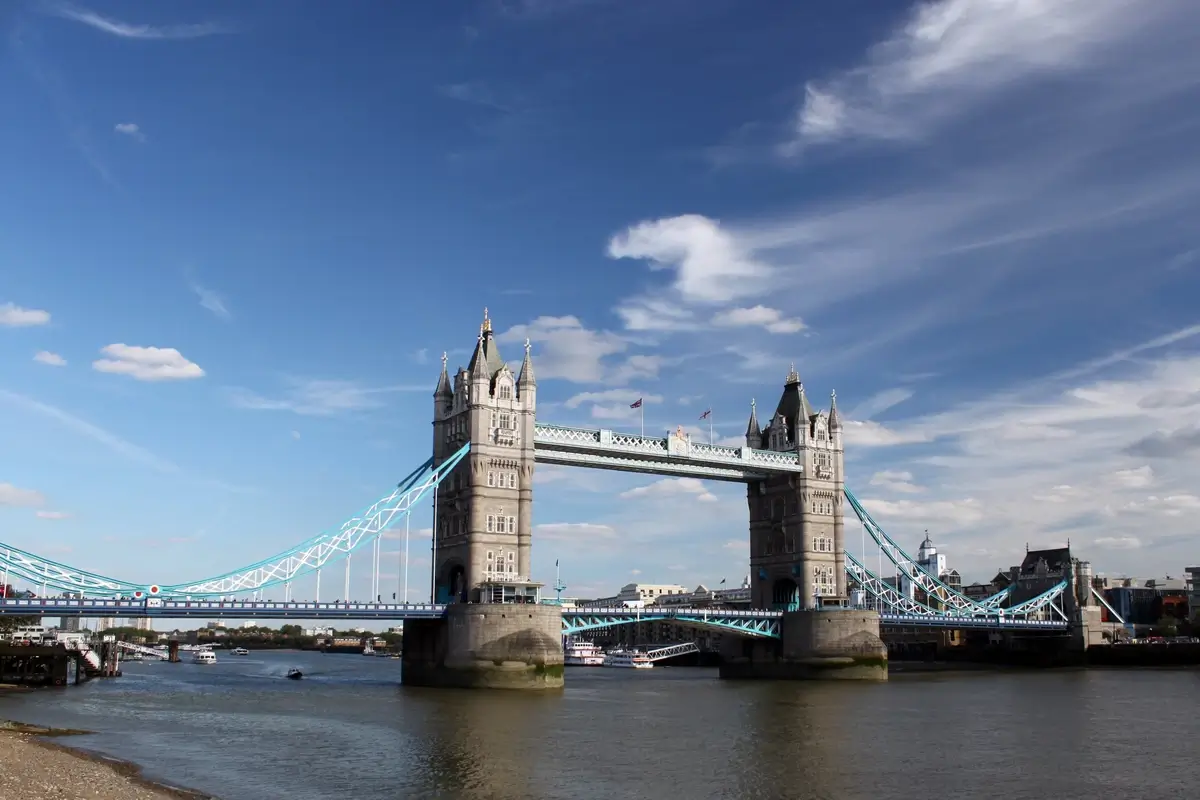
Pixabay / Pexels
10. The Thames Path: A Walker’s Delight
The Thames Path National Trail offers a serene walking experience along the river’s banks. Stretching 184 miles from the river’s source in the Cotswolds to the Thames Barrier in London, it’s a journey through both rural countryside and urban landscapes.
The path takes walkers past historic sites, through nature reserves, and along the bustling heart of London, offering diverse perspectives of the Thames and its surroundings.
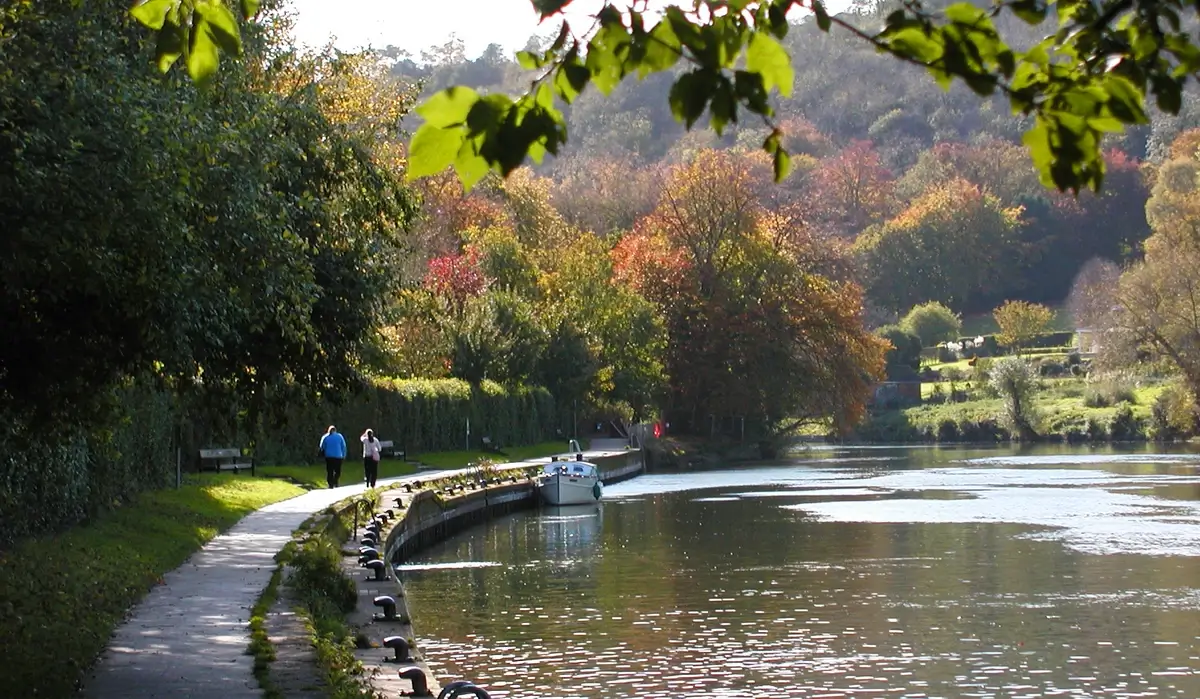
Image: holidayfox.com
11. Literary Inspirations from the Thames
The River Thames has been a muse for literary giants. From Charles Dickens, who immortalized the river in novels like ‘Great Expectations’, to Virginia Woolf’s ‘Mrs. Dalloway’, the Thames has been a central setting, reflecting the social and psychological landscapes of London.
The river’s presence in literature captures its essence as a symbol of life, change, and continuity in British culture.
12. The River’s Role in British Art
The Thames has been a captivating subject for artists over the centuries. Canaletto, Turner, and Monet, among others, were drawn to its ever-changing light and landscape.
Their paintings capture the Thames in varying moods, from misty mornings to industrial scenes, reflecting the river’s role in the evolution of British art and its influence on the artistic portrayal of landscape and urban life.
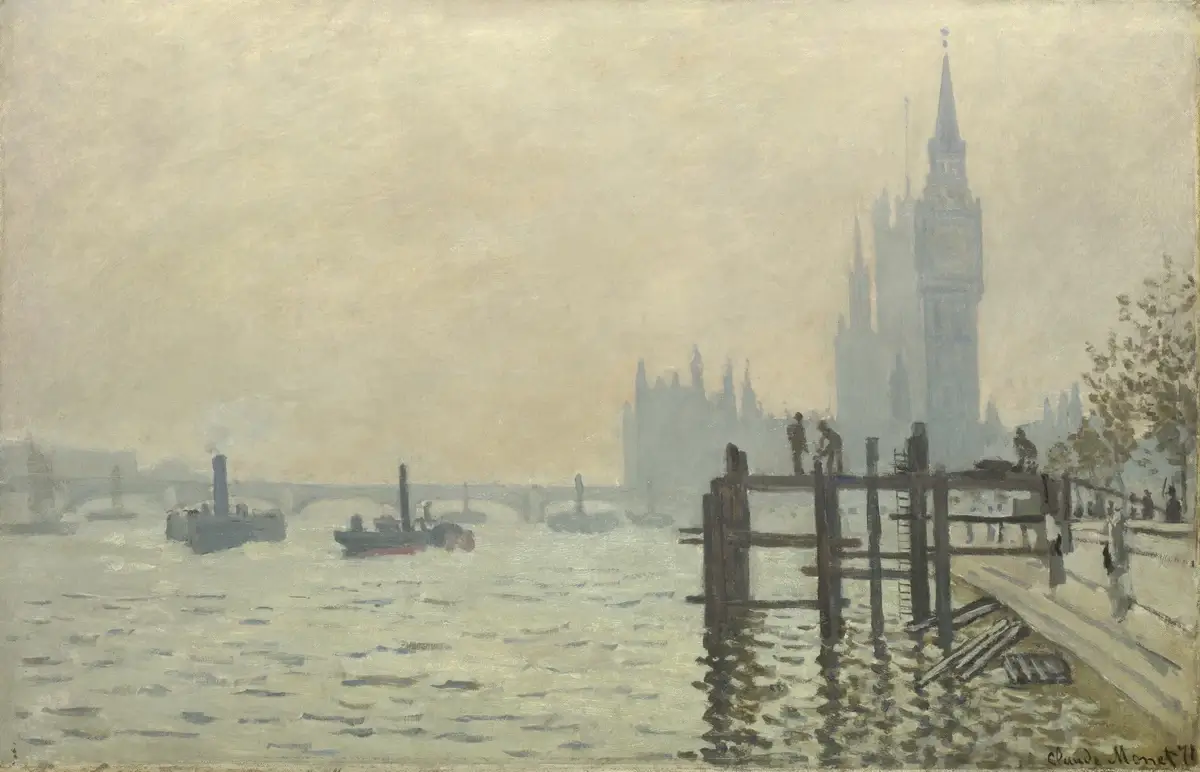
Image: Wikimedia Commons
13. The Thames and London’s Drinking Water
The Thames plays a crucial role in supplying London’s drinking water. Approximately 70% of London’s water comes from the Thames and its tributaries. Advanced treatment plants ensure its safety and quality.
This underscores the Thames as not just a natural landmark but a vital resource sustaining the city’s population, highlighting the importance of river conservation and environmental management.
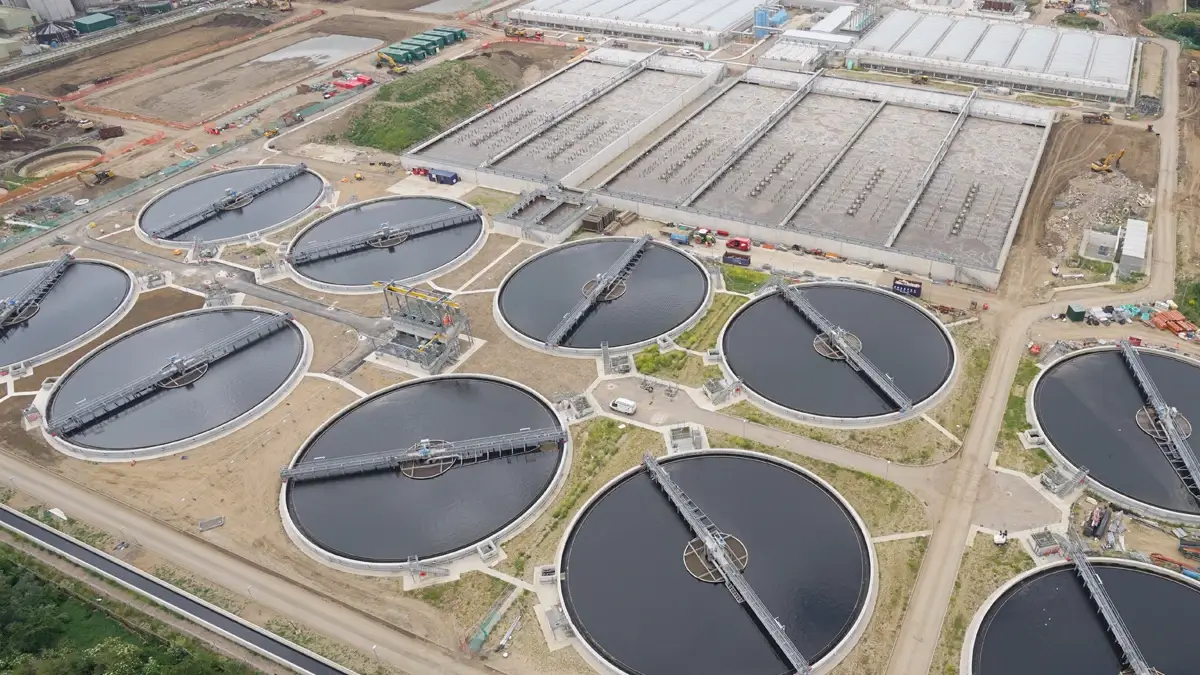
Image: waterprojectsonline.com
14. Secret Tunnels Under the Thames
Beneath the Thames lies a network of tunnels, a testament to human ingenuity. These include the Thames Tunnel, the first successful underwater tunnel in the world, built by Marc Isambard Brunel and his son Isambard Kingdom Brunel in the 19th century.
Originally for foot traffic, now part of the railway network, it paved the way for modern tunneling techniques. These tunnels represent the unseen yet vital aspects of London’s infrastructure and history.

Image: Britannica
15. The River’s Ancient Roman Connection
The Thames has been central to London’s history since Roman times. Londinium, Roman London, was established around 47 AD near the river, using it as a vital trade and transport route. The river’s strategic importance was recognized by the Romans, who built the first London Bridge.
This connection places the Thames at the heart of London’s formation and growth, highlighting its role in shaping the city’s early history and development.
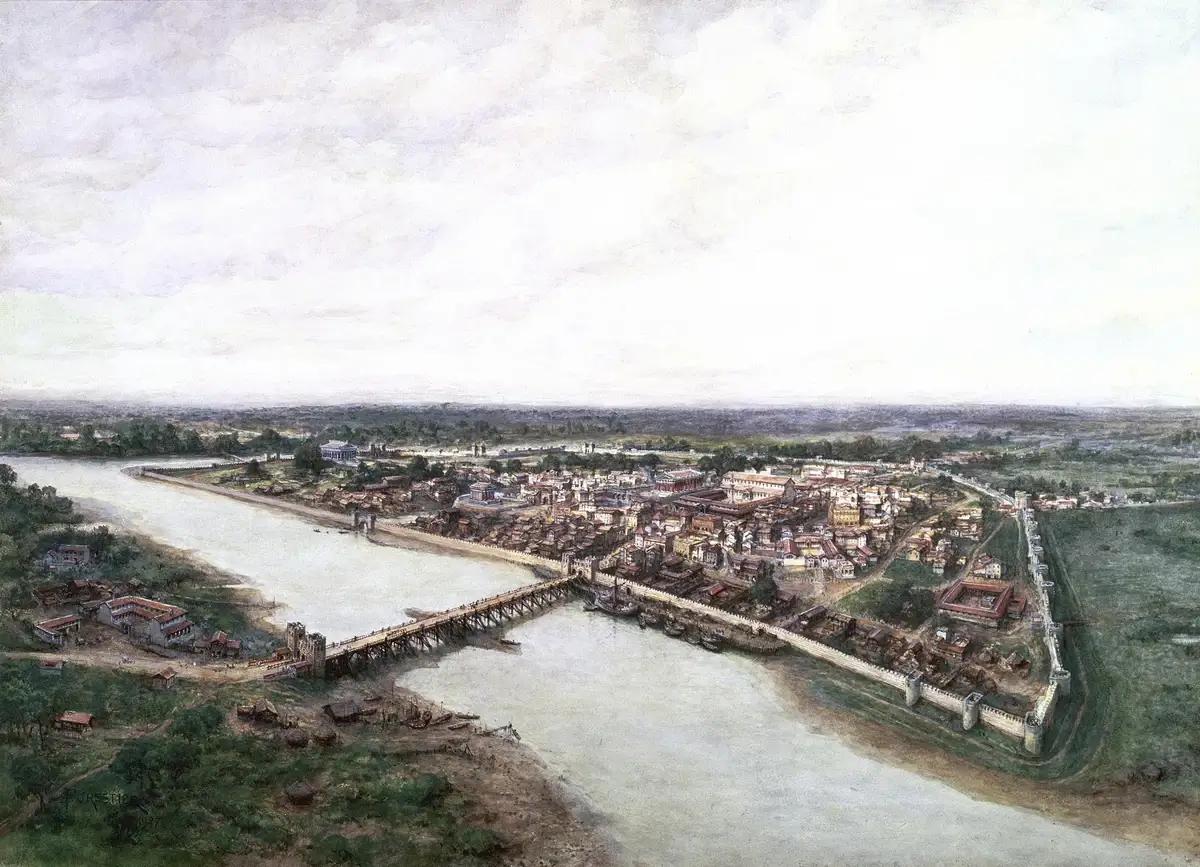
Image: romanports.org
16. Annual Swans Upping Ceremony
Swans Upping is an annual ceremonial event on the Thames dating back to the 12th century. It involves the counting and marking of swans and is conducted by the Queen’s Swan Marker. The ceremony reflects the historical importance of swans as a royal bird, with the Crown traditionally owning all unmarked mute swans in open water.
Swans Upping today plays a vital role in swan conservation and health monitoring.
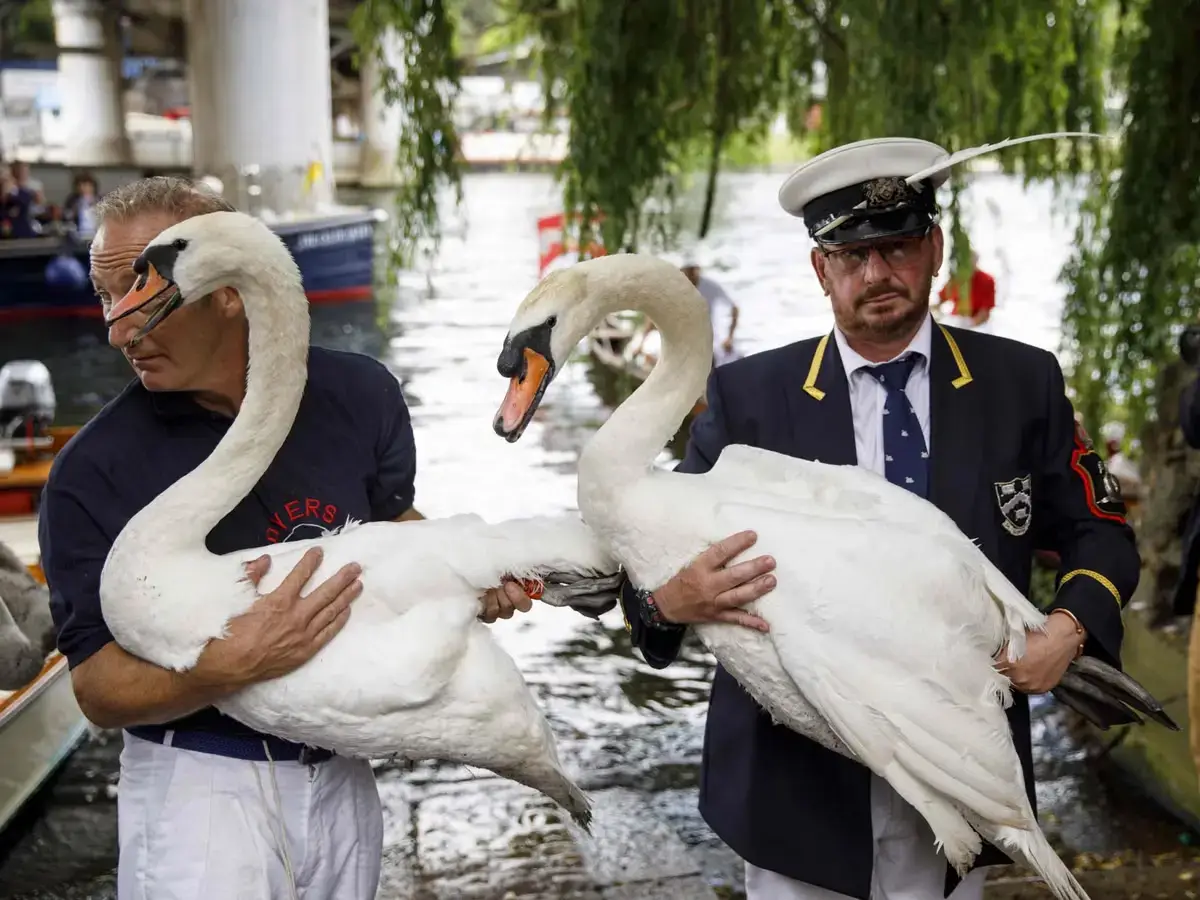
Image: independent.co.uk
17. Unique Islands of the Thames
The Thames is home to over 80 islands, ranging from small eyots to inhabited lands. Each island has its own story, like Eel Pie Island, known for its jazz and blues scene in the 1960s, or Thames Ditton Island, offering picturesque residential living.
These islands add a unique character to the Thames, showcasing its diverse cultural and ecological landscape.
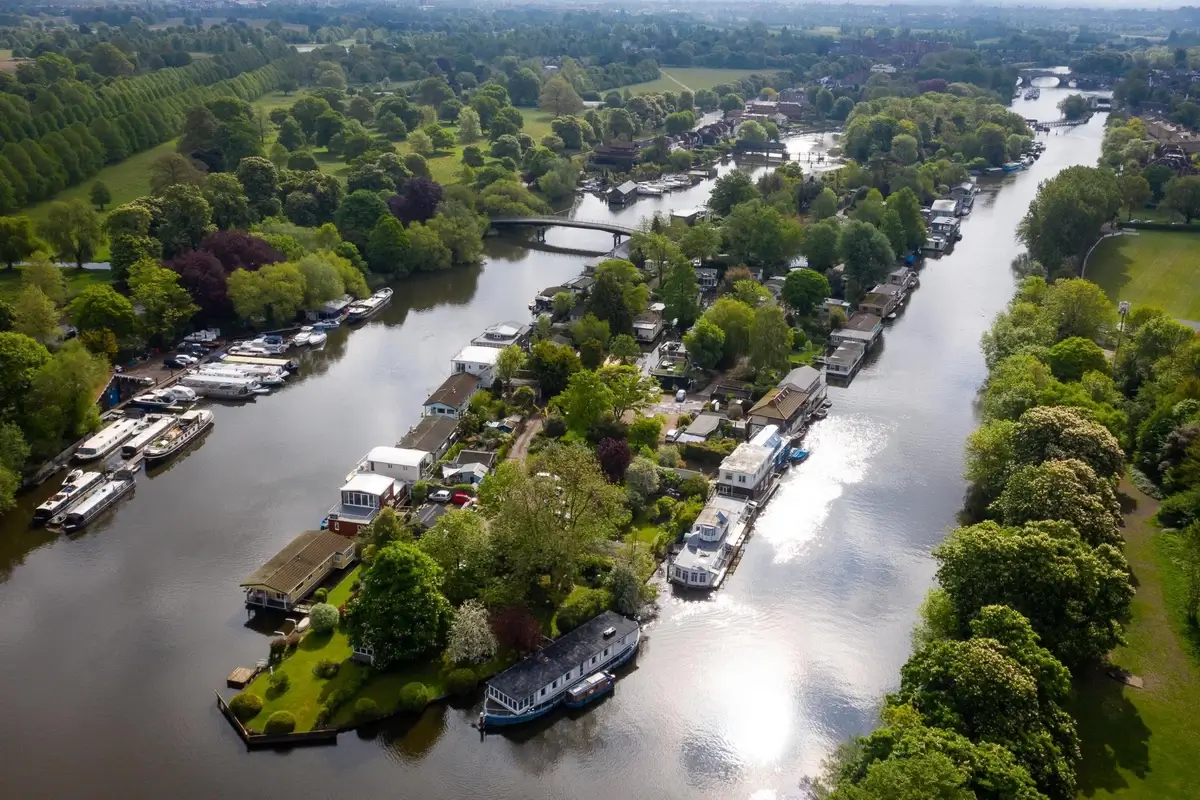
Image: thehandbook.com
18. Historic Thameside Pubs and Eateries
The banks of the Thames are dotted with historic pubs and eateries, some dating back centuries. Notable establishments like The Mayflower, which dates back to the 16th century, and The Prospect of Whitby, London’s oldest riverside pub, offer a glimpse into the social and cultural life along the river.
These historic locales not only provide culinary delights but also serve as living museums, echoing the stories and spirits of past patrons.

Image: mayflowerpub.co.uk
19. Movie Appearances of the Thames
The River Thames has graced the silver screen in numerous films, often serving as a quintessential symbol of London. In the James Bond film “Skyfall” (2012), it provided a dramatic backdrop for action sequences. The river’s cinematic appeal lies in its ability to represent both the historic and modern facets of London.
The 2011 film “Sherlock Holmes: A Game of Shadows” also utilized the Thames to enhance its Victorian London setting, highlighting its timeless appeal in cinema.

In “Spectre,” James Bond (Daniel Craig) and Tanner (Rory Kinnear) speed along the River Thames in London on a RIB, passing the CNS building. Image: stuff.co.nz
20. The River’s Impact on British Music
The Thames has been a muse for many British musicians. The Kinks’ “Waterloo Sunset,” released in 1967, is an iconic song that captures the essence of the river in London’s cultural life. It’s not just the lyrics; the melody itself evokes the Thames’ flow.
In the world of classical music, Handel’s “Water Music,” composed for a royal concert on the Thames in 1717, stands as a testament to the river’s longstanding influence in the arts.
21. Environmental Challenges and the Thames
The Thames has come a long way from being declared ‘biologically dead’ in 1957 due to severe pollution. Concerted efforts have significantly improved its health, with salmon returning to the river after 200 years. However, modern challenges like plastic pollution and climate change-induced flooding pose new threats.
The Thames Tideway Tunnel, a major ongoing project, aims to prevent sewage overflow into the river, a significant step towards its ecological preservation.
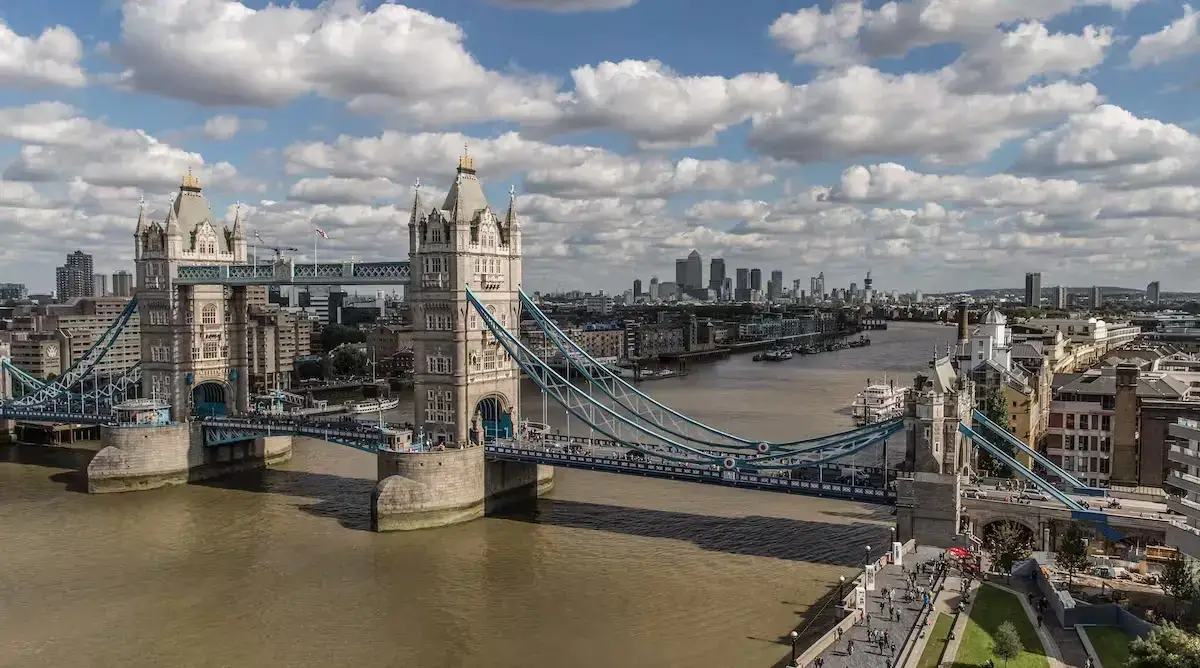
Image: theconversation.com
FAQ
What is the most unusual thing found in the River Thames?
One of the most unusual finds in the River Thames was a 2000-year-old ancient Celtic war horn, known as a carnyx, discovered near Twickenham. This rare artifact, typically used in Iron Age warfare, highlights the river’s historical significance and the diverse array of artifacts hidden in its depths.
How old is the River Thames?
The River Thames is ancient, with its formation traced back to about 30 million years ago. However, the current path of the river was established around 10,000 years ago, after the last Ice Age. This long history makes the Thames a significant geological and historical feature in the UK.
What is the River Thames most famous for?
The River Thames is most famous for flowing through London, the capital city of the United Kingdom. It’s known for its historical significance, landmarks like the Houses of Parliament and the Tower Bridge, and its role in major events such as the annual Oxford-Cambridge Boat Race.
Are there fish in the Thames?
Yes, the Thames is home to a diverse range of fish species. As of recent years, over 125 species of fish have been recorded in the river, including salmon, eels, and smelt. This is a significant improvement from the 1950s, when the river was declared biologically dead.
How deep is Thames river?
The depth of the River Thames varies significantly along its course. In central London, it can be as deep as 20 meters (about 66 feet). However, the average depth is generally less, with many shallower sections, especially near its source in the Cotswolds.
Is River Thames the longest river?
The River Thames is not the longest river, either globally or in the United Kingdom. It is the longest river entirely in England, stretching about 215 miles. The longest river in the UK is the River Severn, which is approximately 220 miles long.
What are the two biggest uses of the River Thames?
The two biggest uses of the River Thames are for transport and recreation. Historically, the river has been a major navigation and trade route. In modern times, it is also a popular site for recreational activities like boating, rowing, and sightseeing, especially in areas around London.


